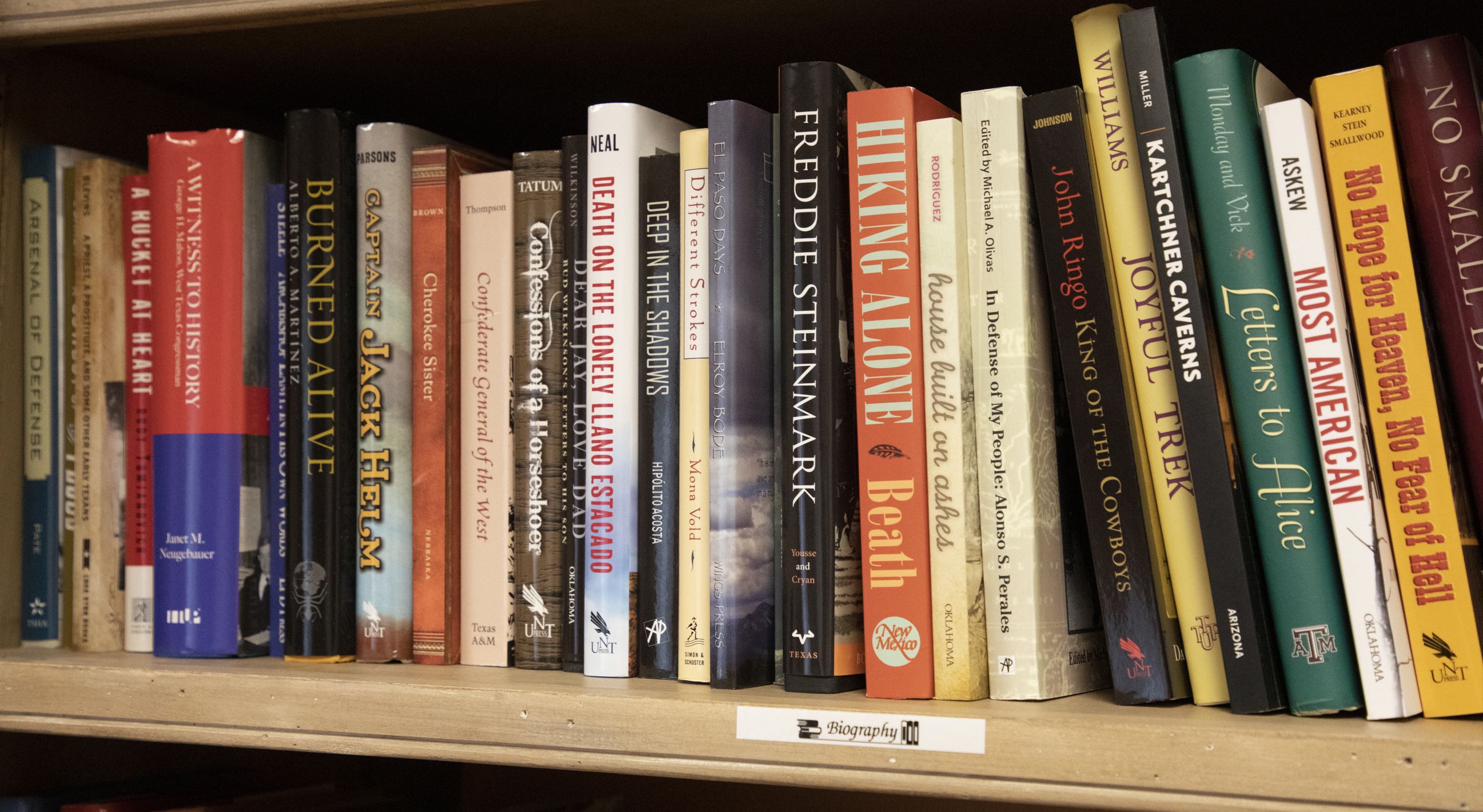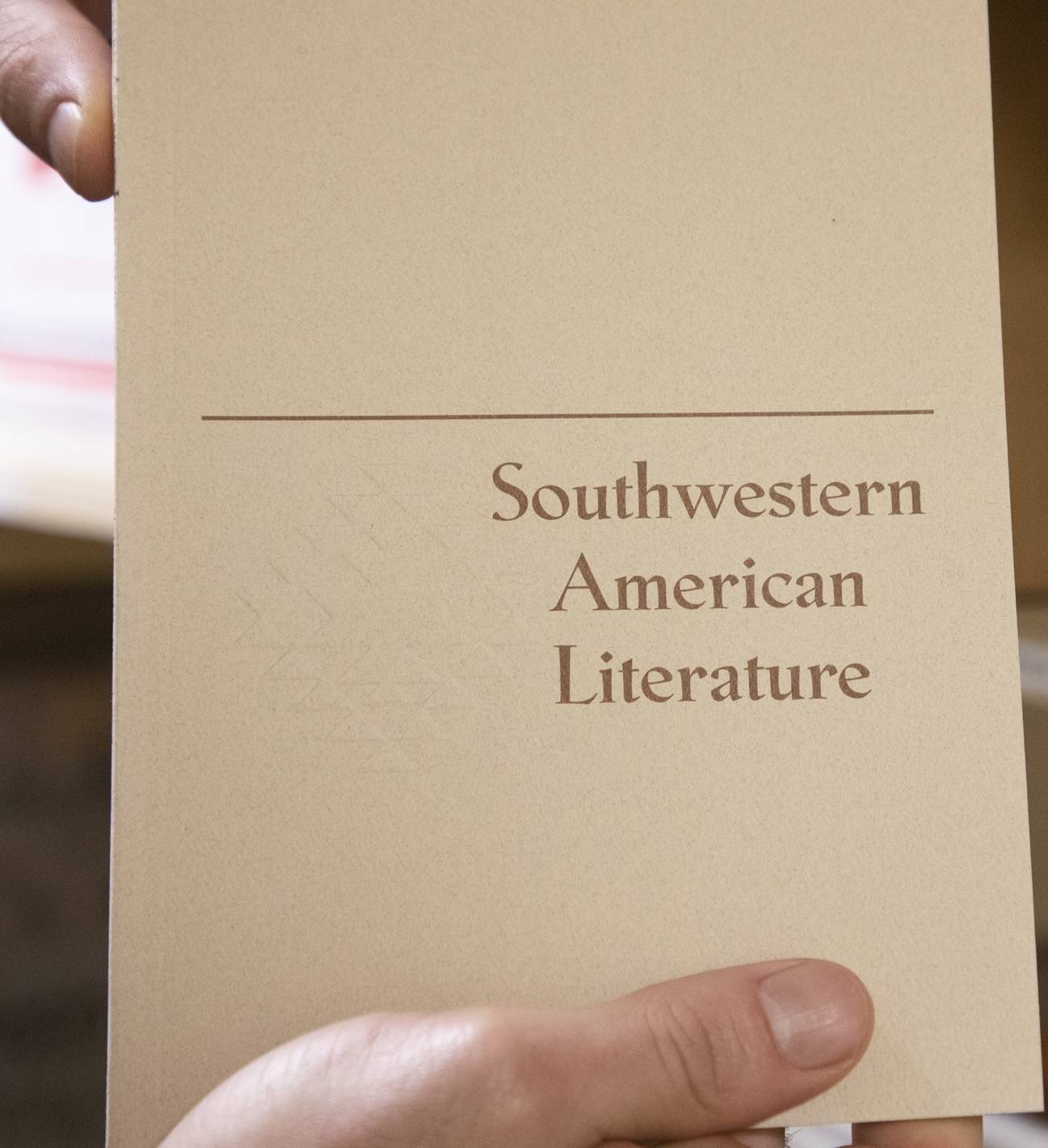
Center for the Study of the Southwest
by John Mckiernan-González
Celebrating the diversity of this unique culture
Throughout its 28-year history, the Center for the Study of the Southwest has made understanding change in the physical and cultural ecology of the Southwest its core mission.
The Center provides ways for students, staff, and faculty to research, discuss, and debate recent and longstanding transformations of the Southwest, a challenge that has concerned those linked to Texas State University long before
the establishment of the Center in 1992.
A pioneer in Southwest study was writer and teacher María Elena Zamora O’Shea, who enrolled in 1906 at what was then Southwest Texas State Normal College. As the Texas Centennial approached in 1936, she worried about what would be said about life in Tejas before the Republic. Zamora O’Shea used her craft of historical fiction to dramatize the ecological impact of mechanized irrigation and railroads on South Texas. In her novel El Mesquite, she used a mesquite to connect Apache communities, Mexican cattle hands, Tejano migrant workers, and Midwestern farmers. Zamora O’Shea’s broad historical discussion of everyday life through a mesquite ends with the arrival of the railroad — “Another surveying party came through. They have changed the route of the road and it passes through me.” Her novel strikes a hopeful note: A school teacher photographs the tree and plans to bring South Texas history to the world.
Understanding why Zamora O’Shea adopted the mesquite in 1935 as an active fictional protagonist is as important as understanding the hydrological and ecological dimensions of the oil-driven mills and pumps that turned the cattle country of the South Texas chaparral into one of the most productive agricultural regions in North America. The Center for the Study of the Southwest holds faith with Zamora O’Shea that generous, shared, interdisciplinary, and humanistic approaches can help us recognize the changes and transformations that define the Southwest.

Today, Center activities flow along three paths: public programming, publications, and curriculum development. Tammy Gonzales, the program coordinator, fosters and manages relationships with the wide variety of departments and organizations that overlap with the mission of the Center.
She worked with Centro Cultural Hispano to create programs that explore the cultures, histories, and creative potential of people in San Marcos. The program, Mi Cultura, Mi Comunidad, [My culture, my community], encourages middle school and high school students to engage with local civil rights elders, migration stories, and Spring Lake creation myths.
This spring, the Center will host HPN25, an exhibit marking 25 years of the Hispanic Policy Network’s presence at the university. Previous exhibits have included gentrification-inspired folktales from Santa Ana, California; Comanche imprints on landscapes in Mexico and the Southwest; photographs from the roads to Abilene; the history of black theater in Texas; and ladrilleria, manual brick construction in Reynosa.
The Center has also created the Our Southwest Moment Lecture series with the Latina/o Studies minor, which helps people see emerging trends in the Southwest.
The Center is also responsible for two journals, Southwestern American Literature (SAL) and Texas Books in Review. SAL publishes poetry, fiction, essays, and reviews that provide a cultural sense of what it means to be Southwestern. Texas Books in Review helps readers get a sense of the intellectual world around them by featuring recent publications that speak to Texas issues and highlight important works about the state. Each year, the Center bestows the Free-tailed Bat Award for Excellence in Criticism on a deserving critic.
The third tier of the Center is curriculum development, connecting the research endeavors of faculty with the daily lives of students. Will Jensen, Senior Lecturer, instructs Southwestern Studies I and II in the English department, which examines the literatures, histories, and cultures that have emerged across the Southwest.
Geneva Gano, Ph.D., the current Jones Professor of Southwestern Studies, is developing courses and symposia that will bring attention to author Sandra Cisneros and other special writers and artists in The Wittliff Collections. Gano is also coordinating a Study-in-America program to Taos, New Mexico, for students to engage with the history of multicultural encounters and entanglements in the headwaters of the Rio Grande in the Sangre de Cristo Mountains.
Over the past two years, the Center has invited scholars who speak on both the diverse peoples and the physical ecology of the Southwest. This year, the Crossing Borders series brings work on Mexican American efforts to publicly remember massacres on Texas soil, the possibilities black Texas migrants created in Mexico at the dawn of Jim Crow, and a poet and performance studies scholar on the echoes of Vietnam in the everyday life of San Antonio.
In 1929, Zamora O’Shea wrote historian Carlos Castañeda, “I so want with all my heart to prove that Texas was settled and had communication with the rest of North America before La Salle’s arrival.” The Center wants all to grasp the many deep connections people have forged between the Southwest and the world. ✪
The Center for the Study of the Southwest holds faith with María Elena Zamora O’Shea that generous, shared, interdisciplinary, and humanistic approaches can help us recognize the changes and transformations that define the Southwest.
John Mckiernan-González, Ph.D., is the director for the Center for the Study of the Southwest.